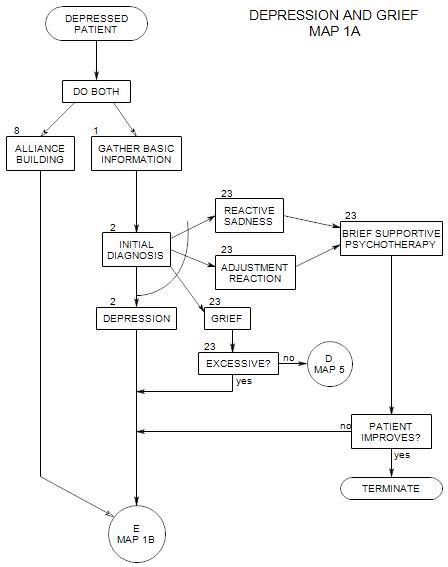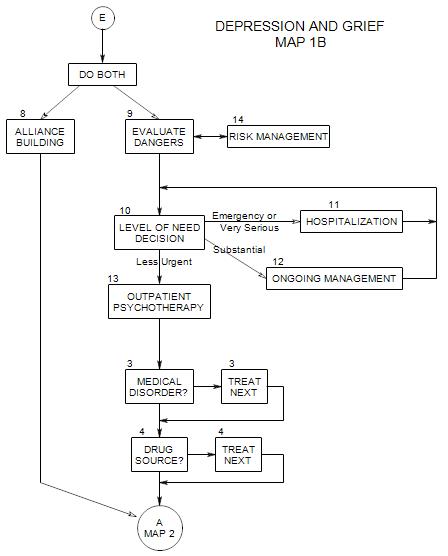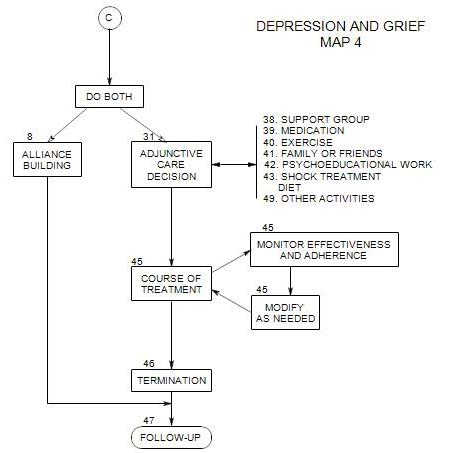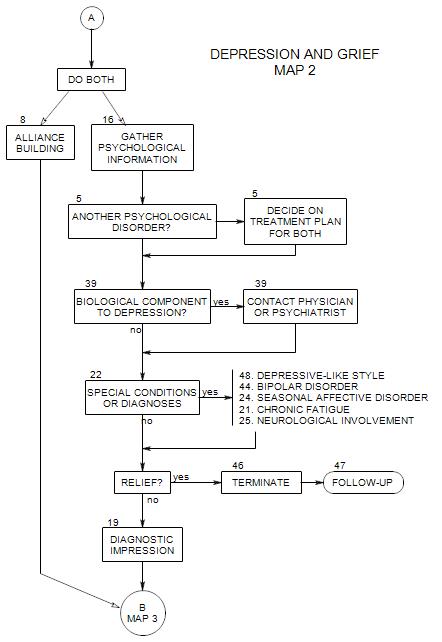
SECTIONS: 5 | 8 | 16 | 19 | 21 | 22 | 24 | 25 | 39 | 44 | 46 | 47 | 48
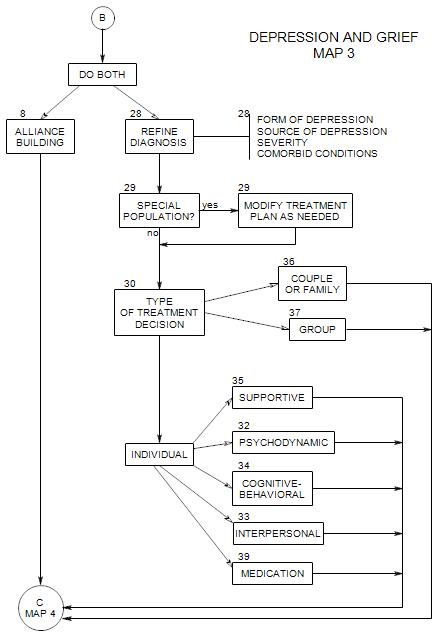
SECTIONS: 8 | 28 | 29 | 30 | 32 | 33 | 34 | 35 | 36 | 37 | 39
-
Follows from Section 30:[decision about form of treatment] on Map 3.
Used When
- the patient is a final expressive pathway for family dysfunction
- the patient needs support, and so do other family members
- two or more family members are depressed
- the patient’s difficulties include difficulties communicating with other family members
- the patient begins treatment with his/her partner as a couple. Here it should be noted that one person may begin treatment with the intention of involving another, but the most effective choice may be to stay with the original patient.
- the identified patient is inarticulate to the point that it is necessary to have someone else in the room
- others in the family can give information about the reactions and attitudes of the identified patient that he/she is unaware of.
36a: Family Therapy
A minimum requirement is that two or more other family members must be capable of meeting with the therapist and patient in some way [even if separately or pairwise] and participating. This usually excludes family members so young or so dependent that they cannot contribute from at least a partly independent perspective.
Family interventions can be taken along a psycho-educational model, to increase family coping and functioning.
May be helpful regardless of whether family problems lead to or follow from the depression of the identified patient. Family problems may also coexist with and exacerbate the depression in a family member.
May be the only way that a depressed person will get therapy: by dealing with the issues that come up in the patient’s relationship with his/her partner or family.
If the patient’s depression is longstanding, the family may have come to be centered around the patient, commonly in an effort to help. Other family members may feel responsible, including children. In the long term, it can lead to impatience, shame for the family, and isolation from the larger community.
Often a depressed family member will be unable to accept positive reactions and support from others, frustrating other family members and exacerbating the depression and irritability of the patient. It is not surprising that families of depressed persons are distressed.
Use of family therapy depends on
- family structure
- role and status of depressed person within the family
- identified patient’s source of depression
- knowledge and awareness of family about depression
- reactions of other family members to identified patient
- ability of patient to tolerate sharing therapist with other family members
36b. Couple Therapy
Used where
- the depressed person insists on bringing in his/her partner
- at least some critical issues appear to have to do with the couple or their relationship
- the depressed person could be expressing something about the couple in his/her symptoms
- the partner of the identified patient needs treatment but won’t go for him/herself.
- the partner can be of assistance in the patient’s treatment, through providing additional information, a different perspective, etc.
